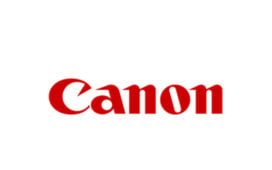
By Patrick Honein, CEO of Sputnik Floyd and co-founder of Mr.B.Chain.
The impact of the Qatar FIFA World Cup 2022 and the acquisition of Christiano Ronaldo by the AL Nasr football club is expected to be far-reaching and profound in the world of football in the Middle East. Soon, with the presence of high-profile international players and increased international attention on the region’s football leagues, there is a strong likelihood that media coverage and sponsorship opportunities will significantly increase. The enhanced exposure that the region’s football leagues will receive will make it an even more attractive proposition for international brands to invest in sponsoring the region’s football scene.
Do you want to learn how brands are interacting with their changing audience in the region this Ramadan? Watch business leaders from brands and agencies come together and discuss how they engage with audiences and the evolving advertising landscape during Ramadan. Click here to book your seat!
The ownership of the broadcasting rights to the region’s football leagues will play a major role in this growth and success. The owners of these rights will have a significant advantage in acquiring media budget spends in the region, which will make it even more appealing for international brands to get involved. This will lead to an increase in the number of international brands investing in the region’s football scene and this, in turn, will help to raise the profile of the Middle Eastern football leagues even further. This will attract even more fans, which will lead to a growth in revenue for clubs and the league as a whole.
With time, this shift in the sport may see a change in the flow of the Middle Eastern sponsorship budgets from being invested more in European football to being invested more in regional football in the Middle East.
Beyond media and sponsorships, investments in stadium infrastructure and technology are expected to be a key component of this effort, as the region looks to create an immersive and enjoyable experience for fans, both in the stadiums and online.
The gulf countries are known to have been early adopters of digital trends and technologies. The adoption of cutting-edge technologies such as AR and functional NFTs is also expected to play a significant role in this transformation. These technologies will help to bring the fan experience to life and create a more interactive and engaging environment for fans. By using these technologies, the region is positioning itself as a leader in the use of innovative solutions in sports, setting a new standard for the international community. This has the potential to increase fan loyalty, drive revenue, and help establish the region as a hub for innovation in the sports industry. By leveraging the latest technologies and creative approaches, the Gulf region is well-positioned to continue to grow and drive the future of sports entertainment.
Sports betting has become a popular aspect of gaming in many regions. Gaming has started in this region and as more countries embrace it, it is about to bring more investment, tourism, business partnerships, and job opportunities. The integration of sports betting is expected to also create new media channels that can operate separately from the sport itself.
It’s obvious that the region is determined to make a difference in the world of football and establish itself as a major player in the sport. With its stability, economy, and commitment to innovation, the region is poised to change the game and leave a lasting legacy in the world of football.









